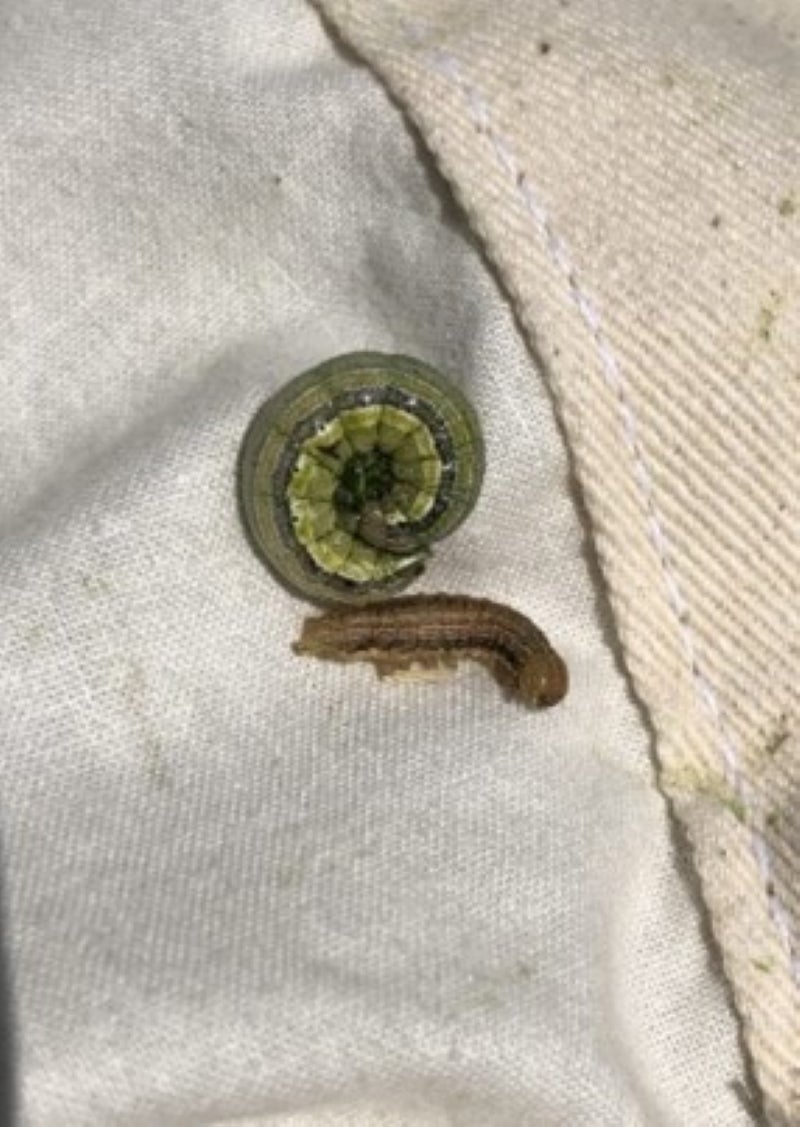True Armyworms on March in Alabama
Published 1:00 pm Sunday, May 21, 2023

- A sweep net is used to find true armyworms in forage grasses or wheat.
|
Getting your Trinity Audio player ready...
|
By Carnell McAlpine, Jr.
Tuskegee University Extension Program Agent
True armyworms are another problem that Alabama’s farmers did not need this year. Cold weather and heavy rains delayed many farmers from planting their row crops in a timely manner. Now, an entomologist with Alabama Extension reports true armyworms have been identified in two northeast Alabama counties.
“The cool, wet spring created ideal circumstances for these caterpillars,” said Dr. Kathy Flanders. “We informally call this insect a true armyworm to separate it from the fall armyworm and various cutworms. Technically, we should call this insect the armyworm or Mythimna unipuncta.”
Flanders said true armyworms are a particular threat to forage grasses, seedling corn and small grains. The pest has been identified in both Dekalb and Marshall counties.
“These worms can do significant damage to a stand of forage grass or small grain fairly rapidly,” she said. “They are also likely to damage late planted corn.”
Flanders explained that the worms will attack small grains by defoliating the plant as well as chewing on, clipping or otherwise damaging the heads.
“On corn, they act more like cutworms,” she said. “They cut the plants off at ground level, in addition to feeding on the leaves.”
Kent Stanford, an Extension specialist in northeast Alabama, found true armyworms when he visited a Dekalb County farm recently.
“The worms ate seven acres in a 30-acre field of Bermudagrass with some ryegrass mixed in,” said Stanford. “The producer had an appropriate pesticide on hand and sprayed as soon as he found them and was able to control them.”
Flanders recommended farmers scout forage grasses, corn and wheat for this foliage feeding caterpillar. True armyworms can be hard to detect because they hide on or in the soil during the daytime.
A sweep net can be used to find them in forage grasses or wheat. Feeding damage is evident by inspecting individual corn plants.
Mature larvae are about 1.5 inches long, smooth-bodied and dark gray to greenish black.
The chief distinguishing feature is five stripes extending lengthwise on the body, three on the back and one on each side. True armyworms have rounded heads when you look at them from the side in profile.
“This insect has several generations per year, but usually only one that causes significant damage,” Flanders said.
According to Flanders, the only good news for farmers is that the pest is relatively easy to kill. She suggests farmers consult Alabama Extension’s grain, corn and forage integrated pest management guides for control recommendations. Regional agents with Alabama Extension’s crops team can provide assistance as well.
For more information, visit www.aces.edu.





